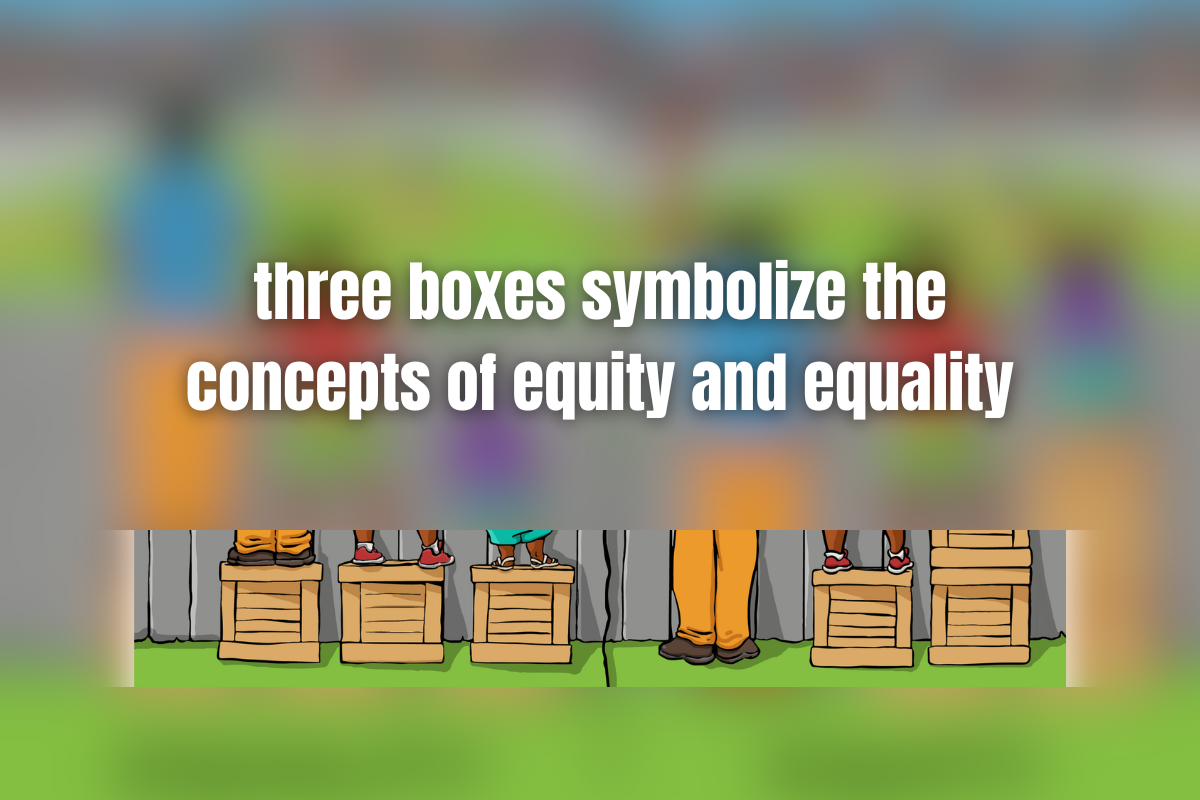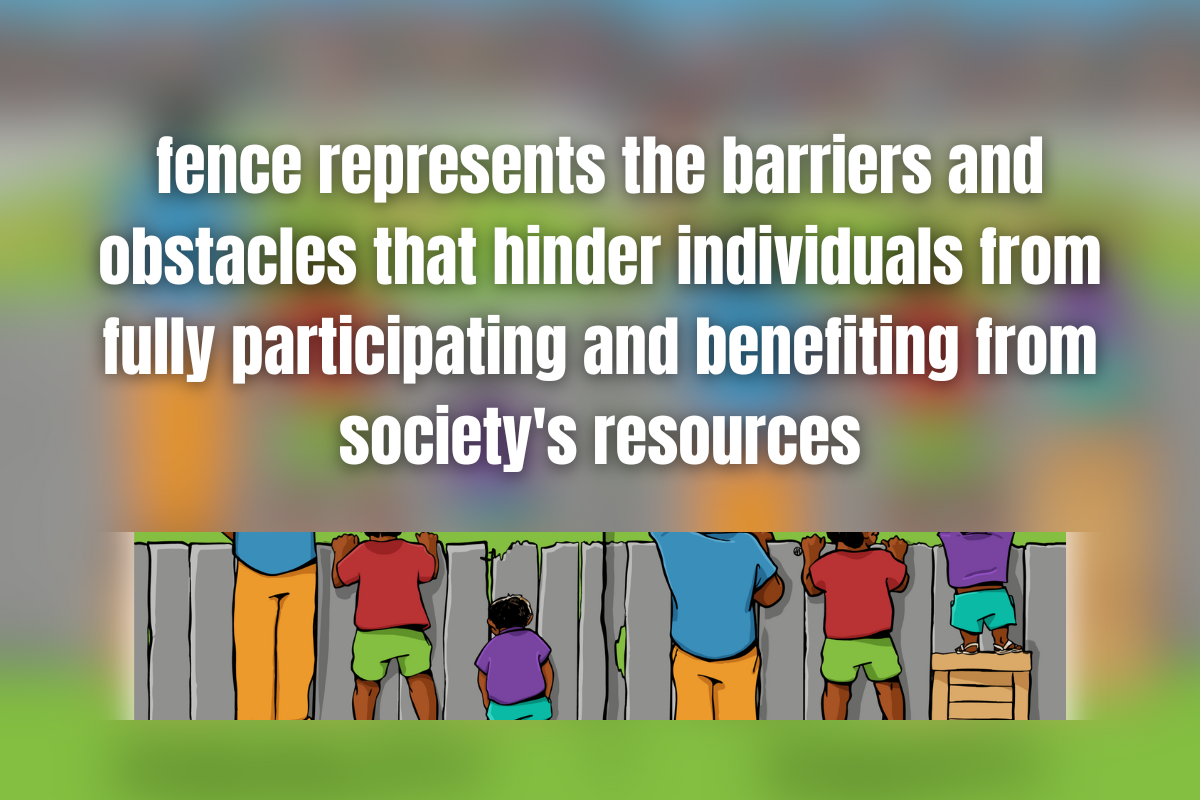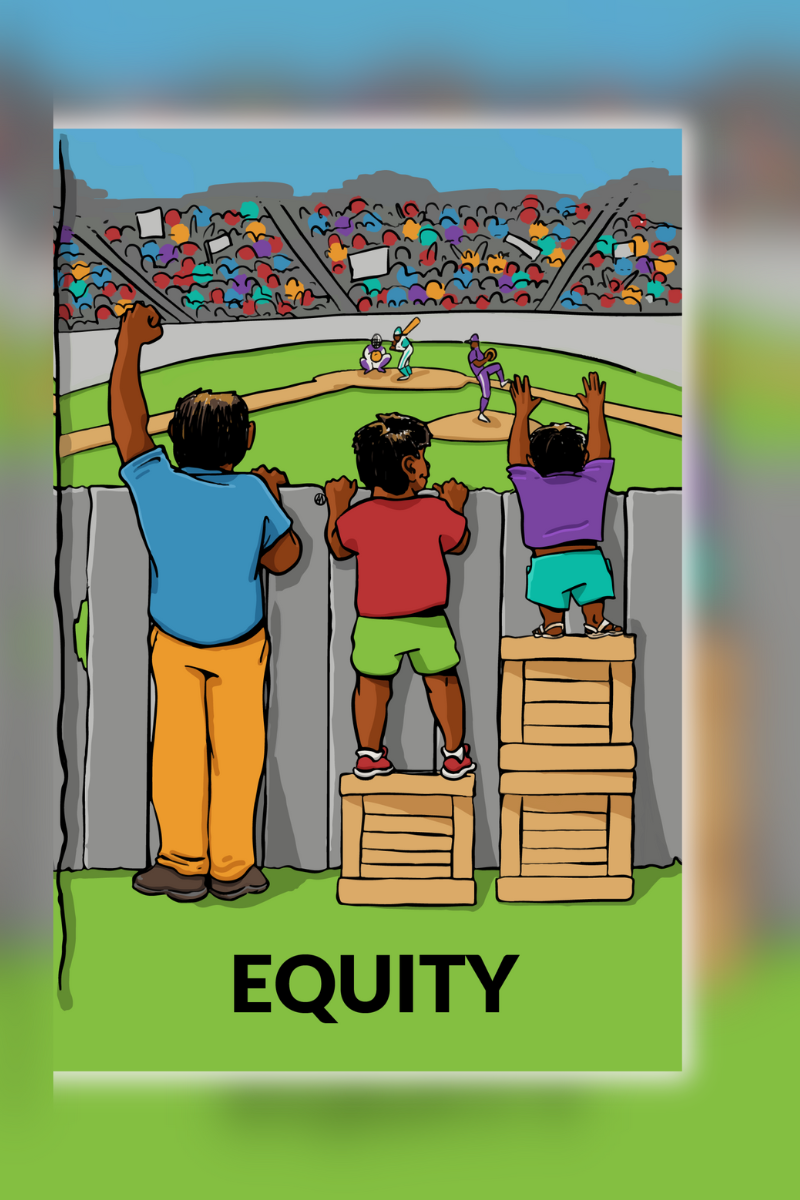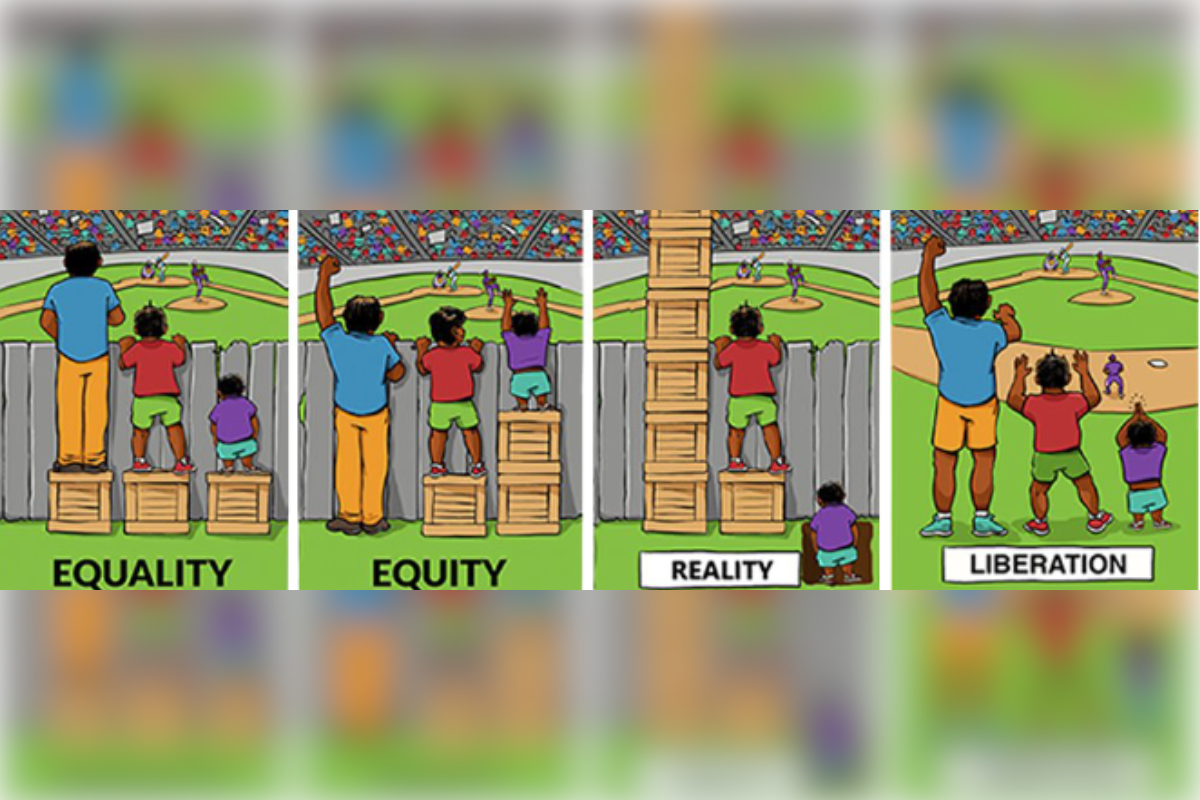Why We’re Still Fighting for the Equal Rights Amendment
October 09, 2024
EQUALITY -- If you are in the social justice space, you may be familiar with the powerful illustration by Angus Maguire which depicts the difference between equality and equity, which are often used interchangeably. This post covers why they are vastly different. Visual representations often possess a remarkable ability to convey complex concepts with simplicity and impact.

Through its thought-provoking design, this graphic sheds light on the crucial distinction between equity and equality, emphasizing the need for fairness and inclusivity in our society.
Together, let's explore its message, significance, and the broader implications it holds for creating a more just and inclusive world.
At first glance, Maguire's Equity/Equality graphic presents a powerful juxtaposition of three individuals of different heights standing on boxes, each striving to watch a baseball game over a fence. The three boxes symbolize the concepts of equity and equality, while the individuals represent diverse groups within society. The fence represents the barriers and obstacles that hinder individuals from fully participating and benefiting from society's resources.




On the left side of the illustration, the size of the box portrays the principle of equality. "All three of you get the same box and therefore you are equal." Given an identical-sized box suggests that everyone receives the same resources or opportunities.
However, the fence remains a significant obstacle for the shortest individual, whose view is still obstructed despite the box (or "equal opportunity"). This highlights the inherent limitations of a purely equal distribution, as it fails to address underlying disparities and the unique needs of individuals or communities.
Often times we hear "but everyone is equal, has equal rights, or has access to the same opportunities. Unfortunately, this is not only incorrect but this language neglects to acknowledge that not everyone has the same set of challenges (find further examples in this post).

In contrast, the right side of the illustration represents equity. In this scenario, the boxes are adjusted to accommodate the varying heights of the individuals. By providing support tailored to their specific needs, the graphic demonstrates how concepts of equity allows each person to overcome the barrier and enjoy an unobstructed view of the game.
This concept of fairness acknowledges and actively addresses systemic inequalities, ensuring that all individuals have equal access to opportunities, resources, and support.
In our previous blog post on the power of equality in America, we review all the ways society benefits when everyone has a seat (of appropriate height) at the table. We encourage you to consider the ways you can "pull up a chair" for everyone in your community!
While the original illustration by Maguire took the world by storm, some saw how the equity depiction could be enhanced. The following adaptation goes beyond equity and portrays the ultimate goal of inclusivity and justice.

At the furthest end of the illustration, the fence is removed altogether, enabling everyone to enjoy the game without barriers. This powerful image emphasizes the importance of dismantling structural and societal barriers that disproportionately affects marginalized communities.
It encourages us to create an environment where equity is the foundation, ultimately leading to a just and inclusive society.
Maguire's equity/equality illustration serves as a reminder that equality alone is not enough to achieve justice and inclusivity. By highlighting the significance of equity, the visual prompts us to recognize and address the unique needs and barriers faced by individuals or communities with diverse backgrounds and unique challenges.
It urges us to reimagine systems, policies, and practices that perpetuate inequity, advocating for fair distribution of resources and tailored support to uplift historically marginalized communities.
Moreover, the visual illustration sparks conversations about the importance of breaking down barriers and creating an inclusive society. It compels us to challenge our assumptions and biases, fostering empathy and understanding towards those who face different obstacles in their pursuit of a fulfilling life.
By embracing the principles of equity, we can work towards dismantling systemic injustices and creating a world where everyone has equal opportunities to thrive.